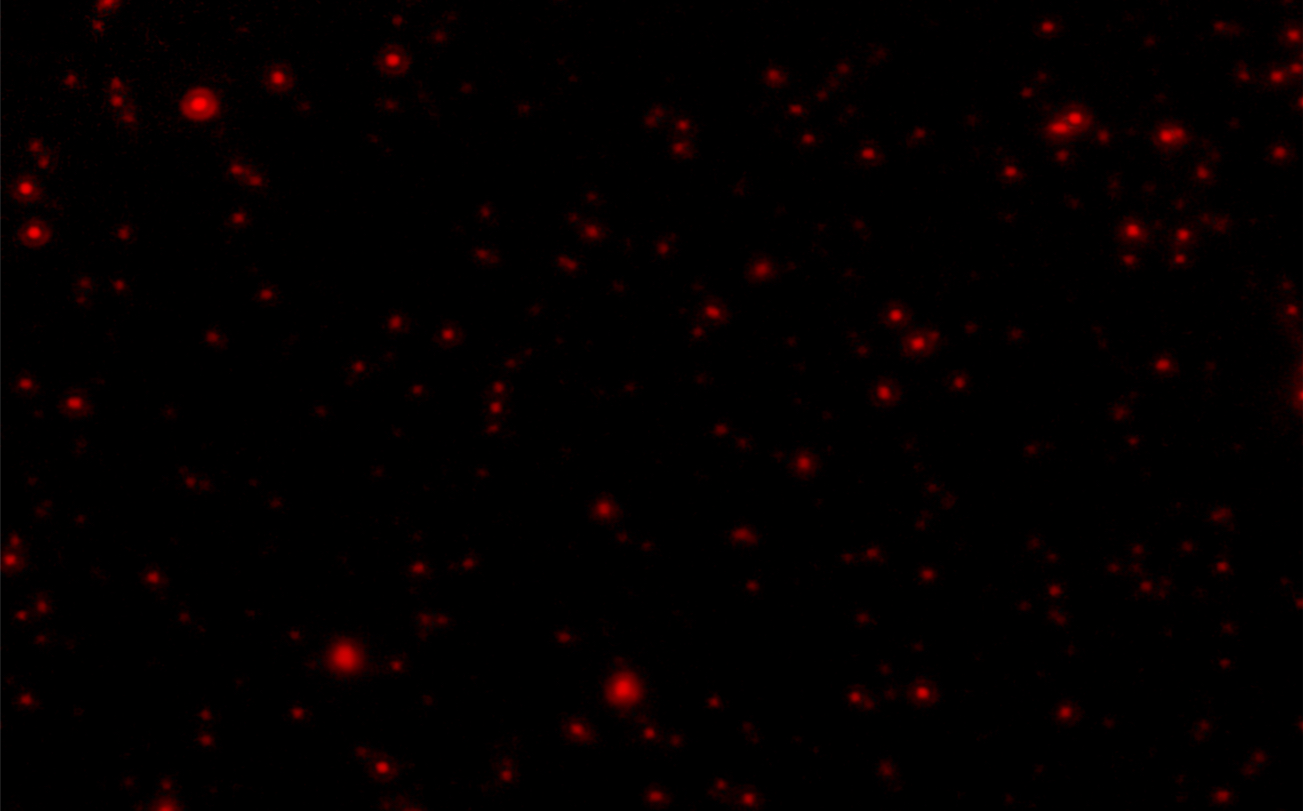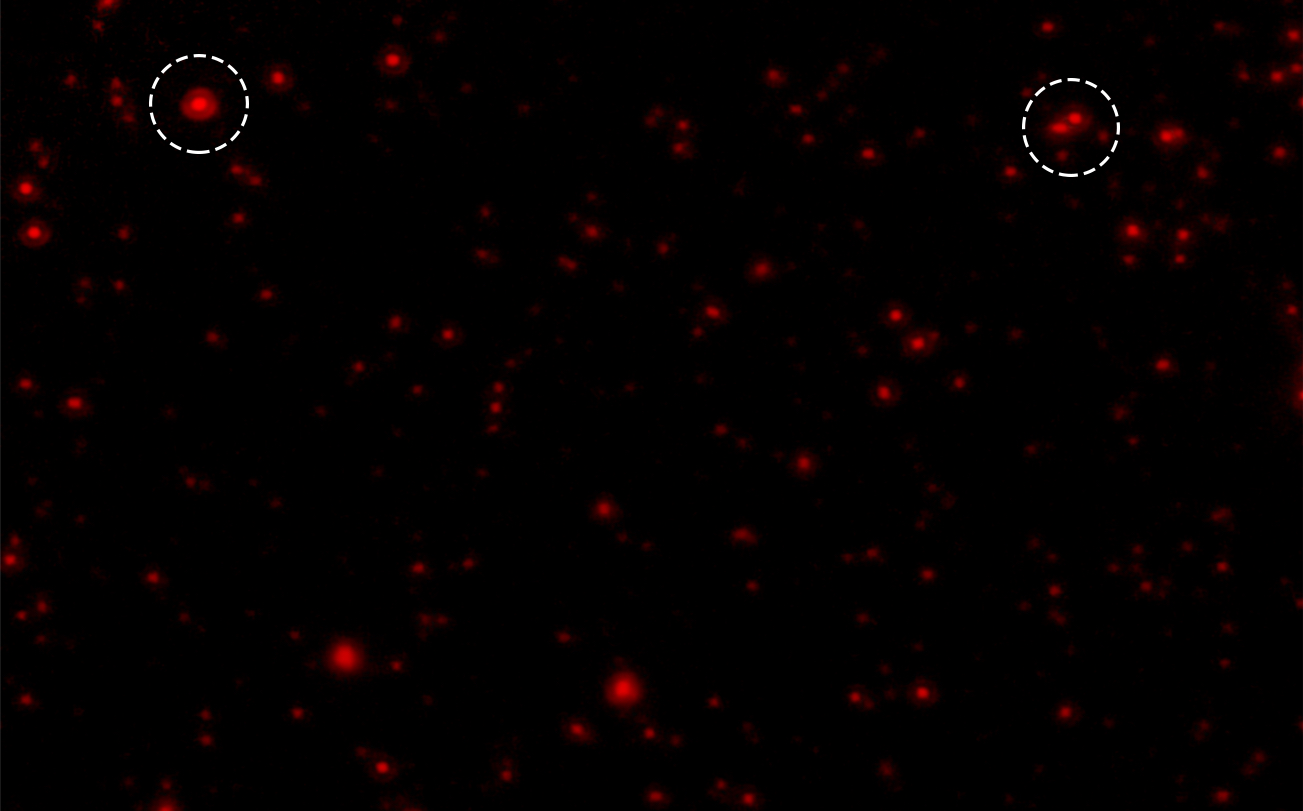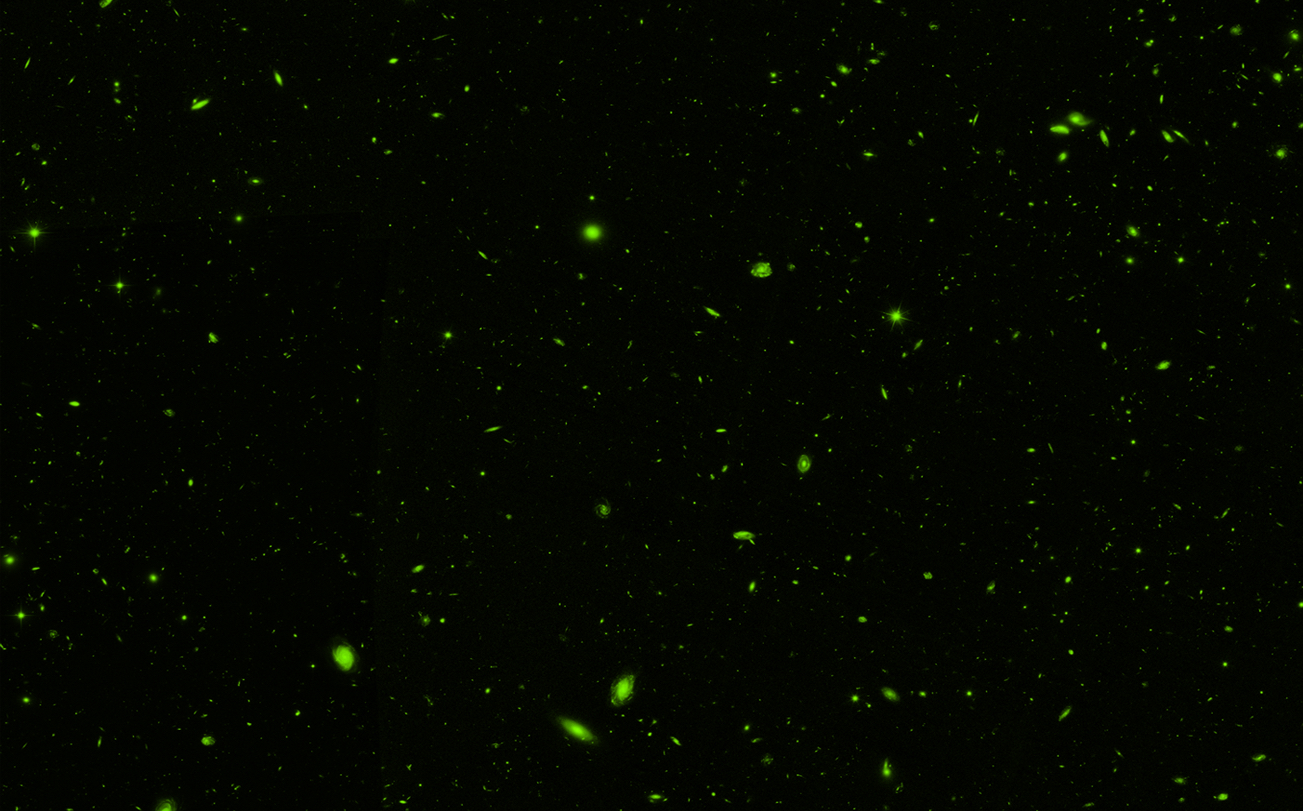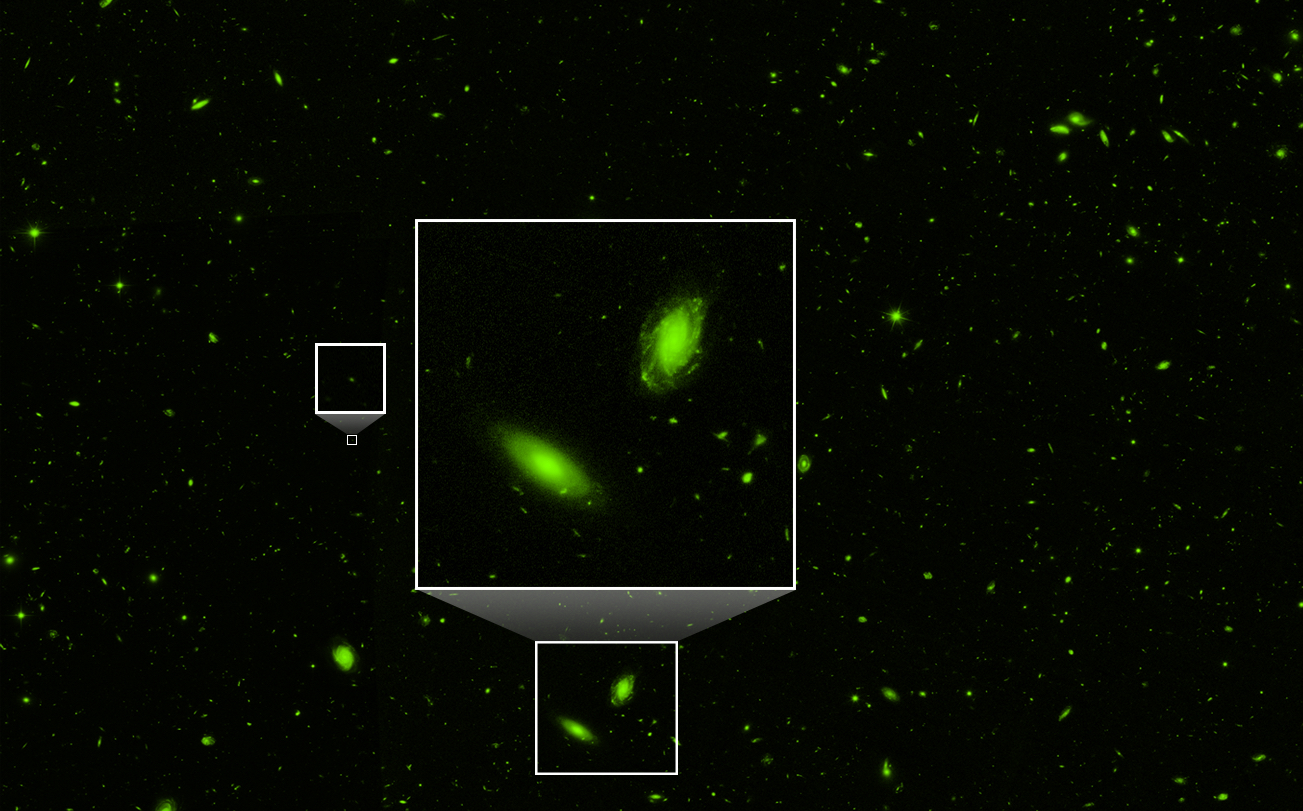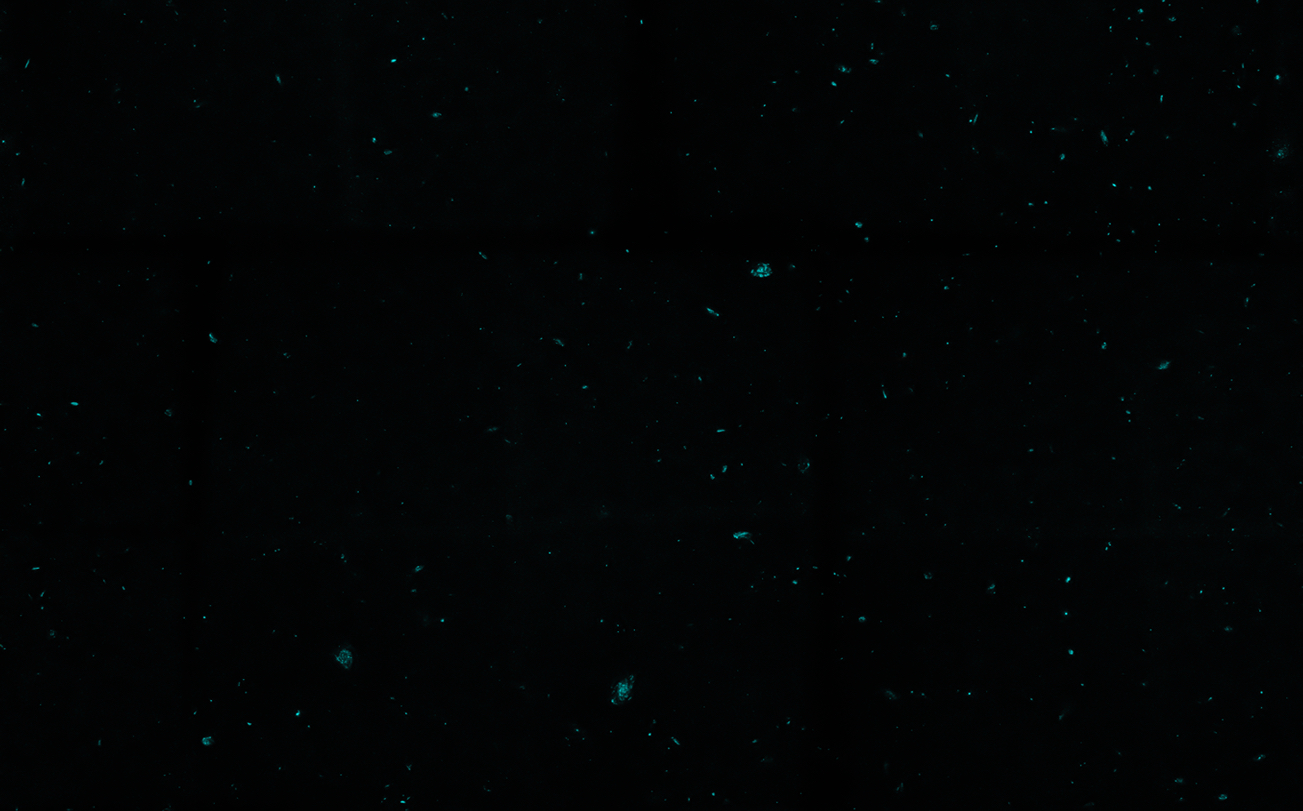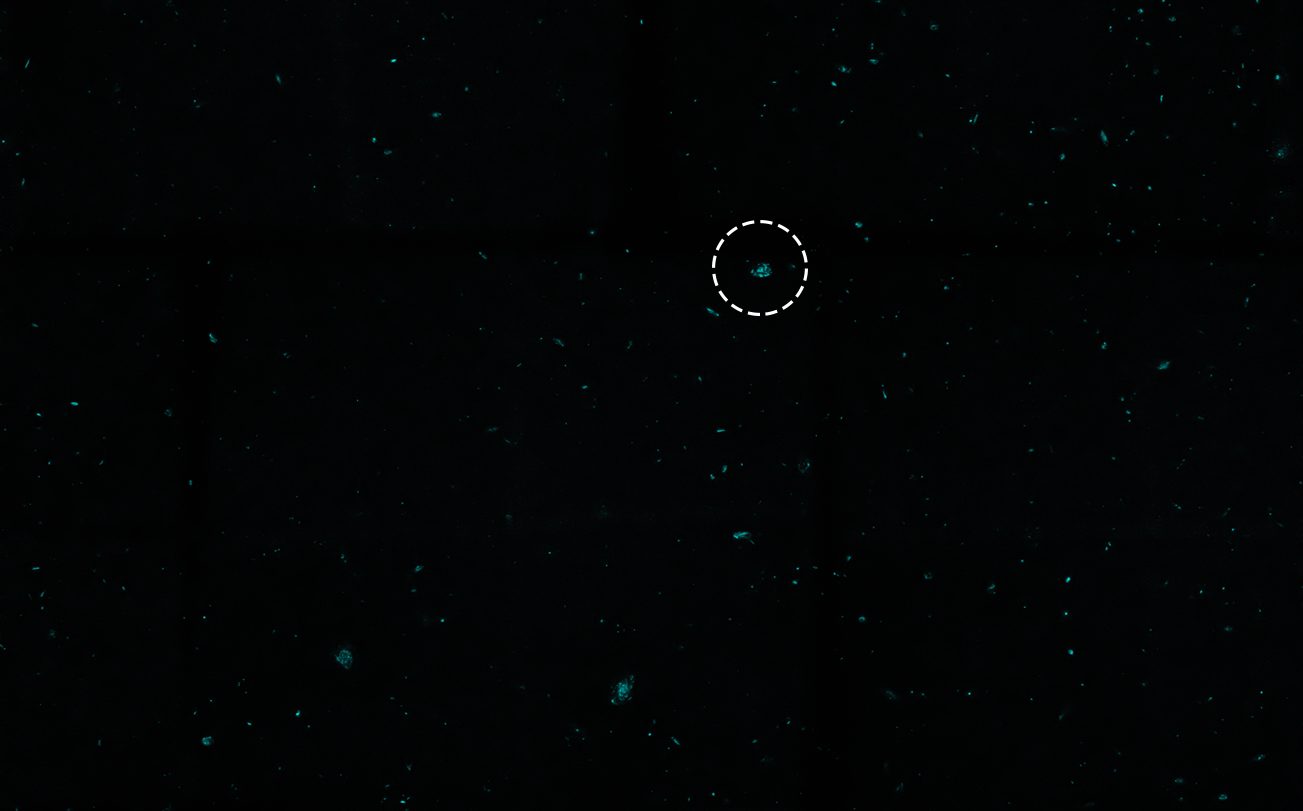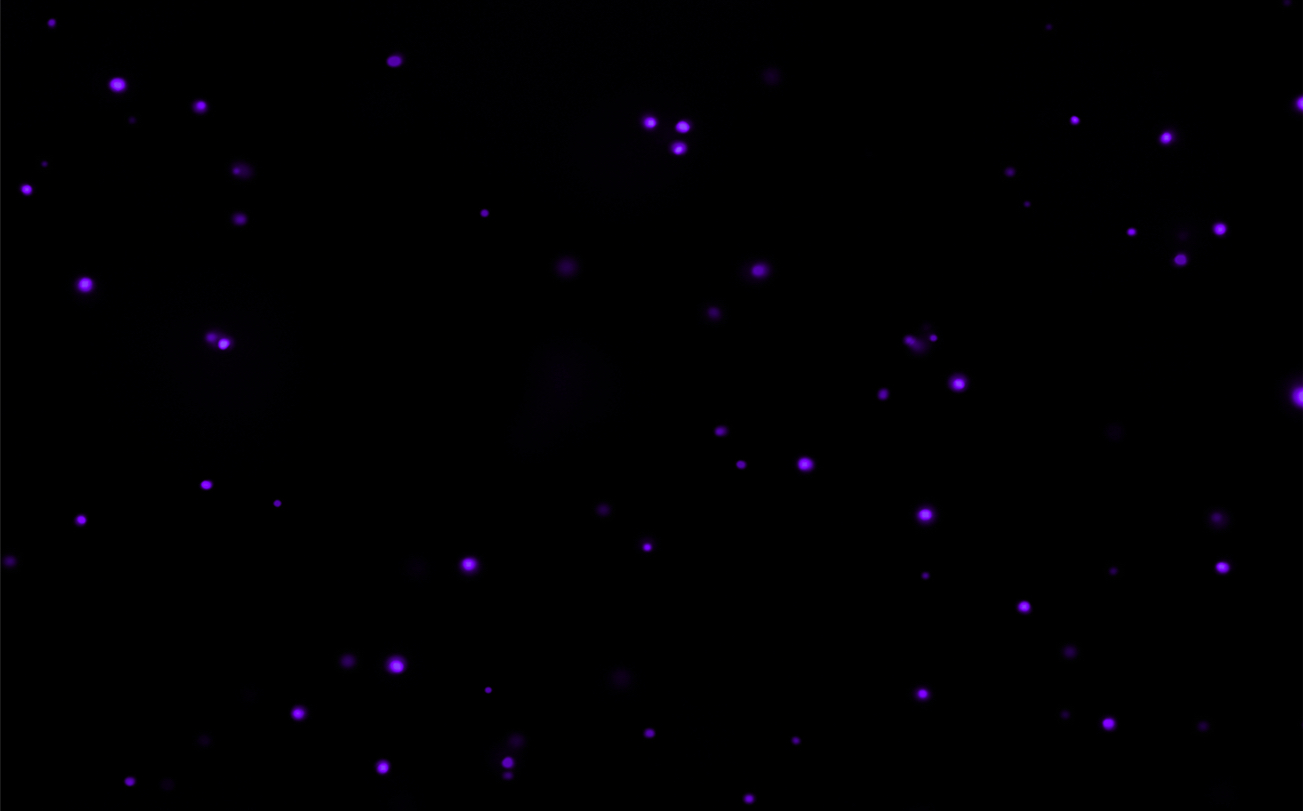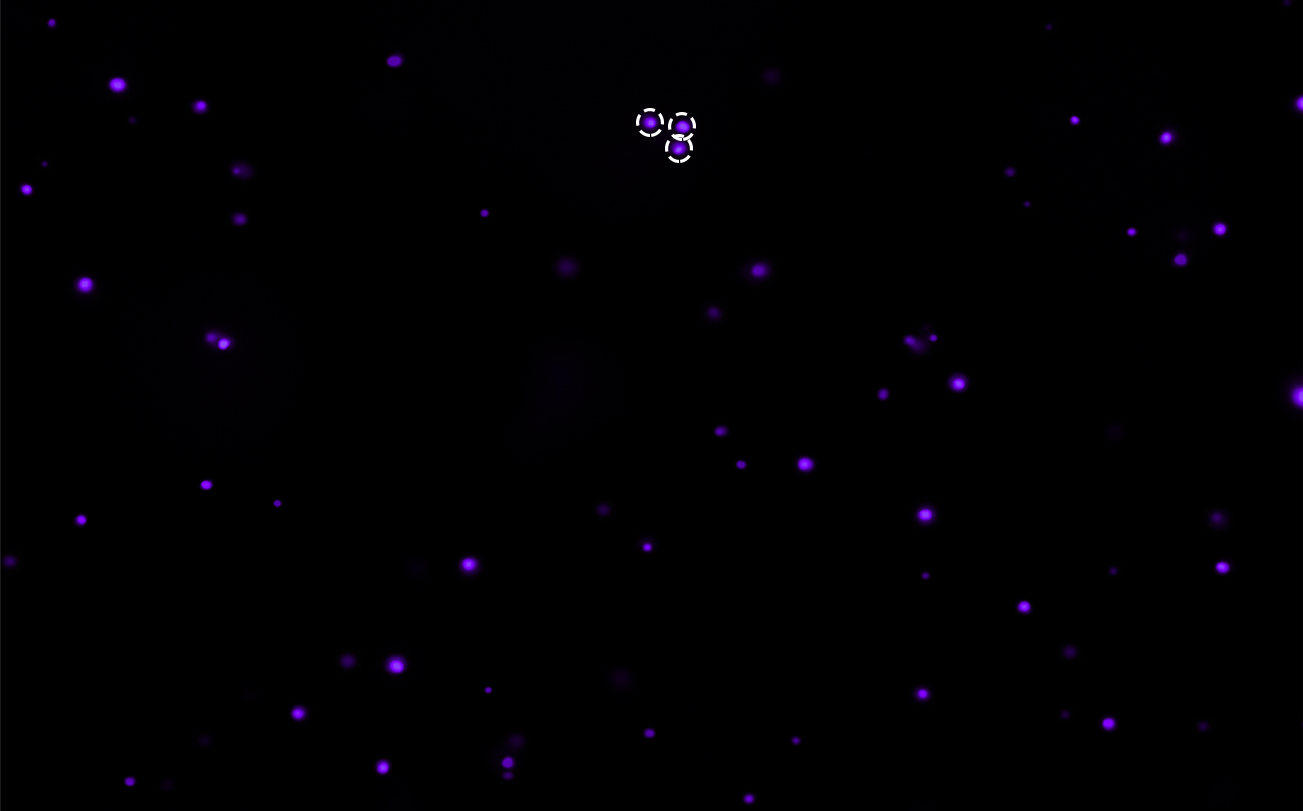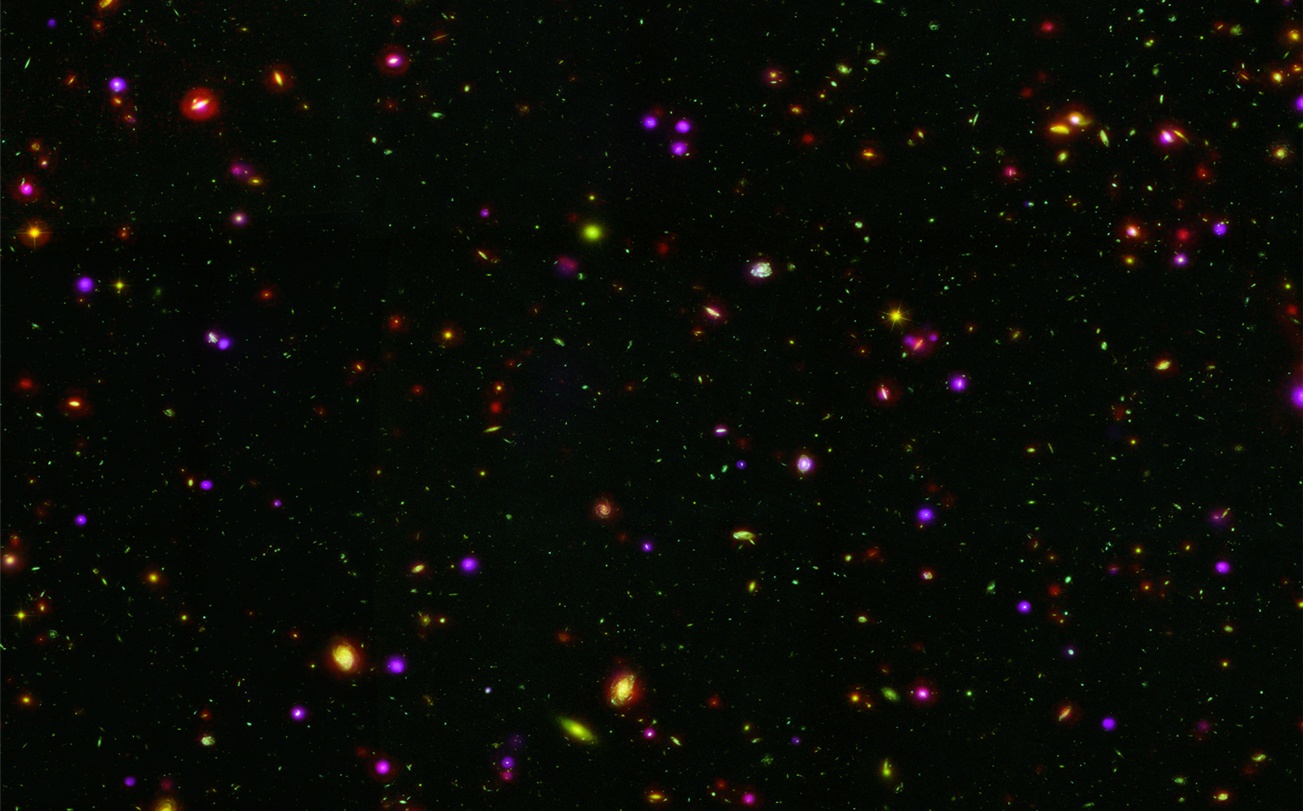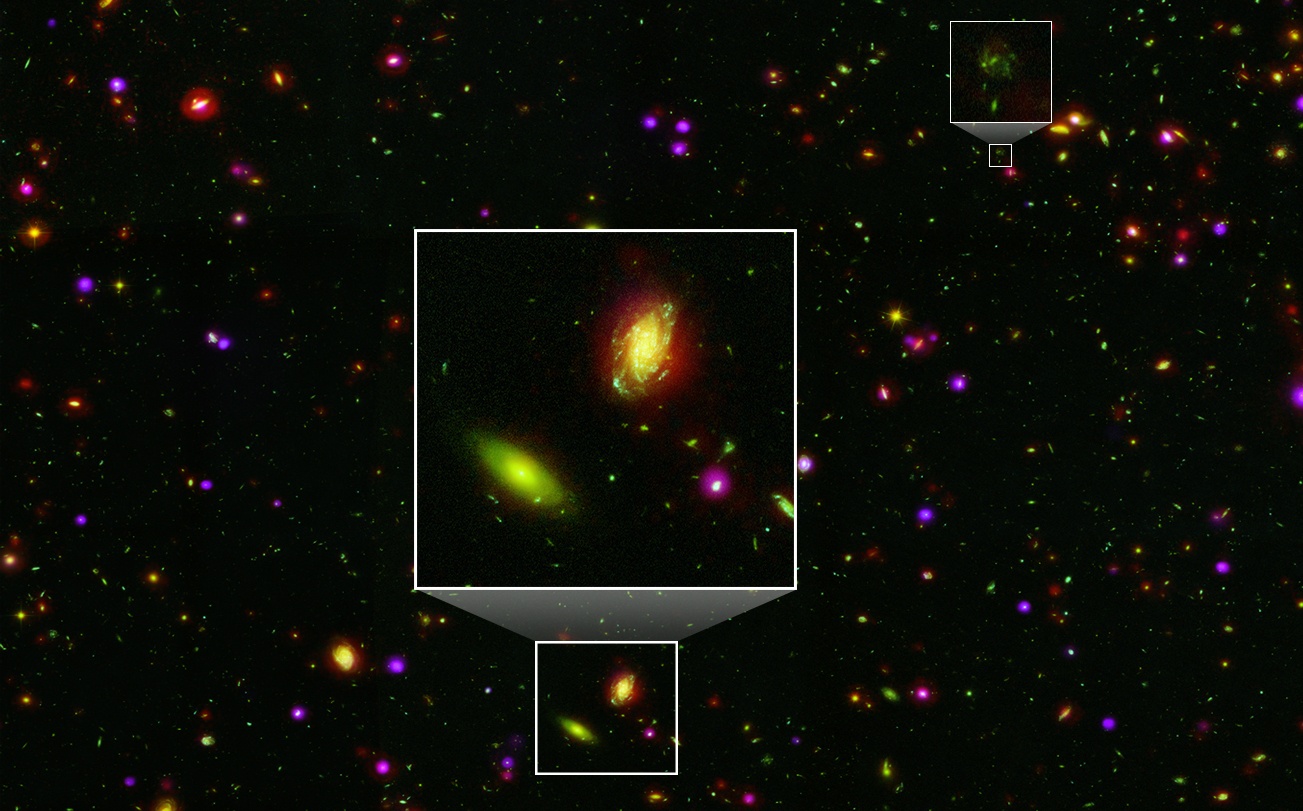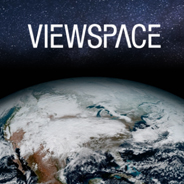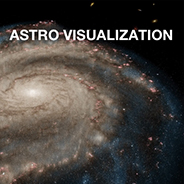Interactive Overview
Slider Interactive: A series of images showing the same field of galaxies in different kinds of light. The images differ in terms of color and resolution, as well as the structures and detailed features that are visible. Below the caption is a horizontal slider bar with five labeled stops and a solid white circle. Dragging the white circle right and left along the slider bar causes the image, labels, and caption to change. The change occurs gradually as one image, along with its associated captions and labels, fades out and the next fades in. A toggle button to the upper right of the image turns the image labels off and on. Some labels are in the form of text with arrows pointing to specific features in the image. Other labels are graphic overlays.
Slider Stops
From left to right, the slider stops are labeled: Infrared, Visible, Ultraviolet, X-ray, and Multi-wavelength.
Summary of Slider Stops
Sliding left to right reveals the following:
- “Infrared” stop shows how the patch of sky is seen in infrared light, with fuzzy red blobs scattered unevenly across.
- “Visible” stop shows how the same patch of sky is seen in visible light, with bright green specks scattered unevenly across.
- “Ultraviolet” stop shows how the same patch of sky is seen in ultraviolet light, with faint blue-green specks scattered unevenly across.
- “X-ray” stop shows how the same patch of sky is seen in X-ray light, with fuzzy purple dots scattered unevenly across.
- “Multi-wavelength” stop shows a composite of all the interactive’s wavelengths combined. This is the initial image shown when the interactive is loaded.
Stop 1: Infrared
Image Description: Infrared
A few hundred red blurry dots in various sizes, some fainter than others and some with hazy halos, are scattered across the image. Red points that are slightly larger than the rest are near the edges of the image and are infrequent compared to the quantity of fuzzy, small red dots. The red blobs seem to follow no particular pattern or order.
Labels: Infrared
There are two text labels and two graphic overlays. In the upper left, a large, red circular blob with a fuzzy halo is in a white circle. It is labeled “Distant galaxy.” In the upper right is another white circle with a few small red blurry smudges. This circle is labeled “Interacting galaxies.”
Caption: Infrared
Dust heated by star formation and black holes is highlighted by infrared light.
Stop 2: Visible
Image Description: Visible
This image reveals the same patch of sky, now seen in visible light. The dots and smudges in this image are bright green and are more sharply defined than in the prior “Infrared” stop, so that certain details (like galaxy shapes) can be identified. The bright green dots are in various sizes and are scattered across the image, and many additional small green points appear in this stop. Most of the red points in the previous “Infrared” stop overlap in position with the brightest green objects in the “Visible” stop.
Labels: Visible
There are two text labels and four graphic overlays. Overlaid on the photo, in the center left of the image, is a small square with a magnified view of a small green dot in a smaller square just below. The magnifying box is labeled “Distant galaxy.” In the center of the image is a large square with a magnified view of the patch of sky in a smaller square just below. Two distinct galaxies can be seen. The one on the right appears to have spiral arms, while the one on the left is an oval shape that smoothly varies from its bright center to its diffuse edges. The large square box is labeled “Two nearby galaxies.”
Caption: Visible
Visible light offers glimpses into galaxy evolution, tracing stellar populations over cosmic time.
Stop 3: Ultraviolet
Image Description: Ultraviolet
This image reveals the same patch of sky, now seen in ultraviolet light. The amount of objects seen in this image is greatly reduced in number compared to the prior “Visible” stop, and the objects that are noticeable have a faint blue-green color. Most of the brightest green objects in the previous “Visible” stop overlap in position with objects in the “Ultraviolet” stop. The specks of light are in various sizes, with the majority being small points scattered across. A few of the largest objects have lumpy spiral arms made out of a series of points.
Labels: Ultraviolet
There is one text label and one graphic overlay. In the upper center is a white circle with a blue-green object made out of a series of points that is larger than its neighboring dots. It is labeled “Active star-forming galaxy.”
Caption: Ultraviolet
Ultraviolet emission highlights star formation through cosmic time.
Stop 4: X-ray
Image Description: X-ray
This image reveals the same patch of sky, now seen in X-ray light. The objects in this image are bright purple blurry dots that are mostly uniform in size. The concentration of purple blobs seems to be slightly heavier towards the image’s edges, but do not follow a particular pattern or order. A small cluster of three purple dots are near the top center of the image. While a few of the purple points overlap in position with objects in the previous stops, most do not.
Labels: X-ray
There is one text label and three graphic overlays. The three bright purple dots in the top center of the image each have a white circle and are labeled “Black holes within distant galaxies.”
Caption: X-ray
This deep X-ray image reveals the growth of active supermassive black holes within distant galaxies.
Stop 5: Multi-wavelength
Image Description: Multi-wavelength
This image is a composite of all the wavelengths explored in this interactive. Colorful dots are peppered across the dark sky, some small points and others asymmetrical blobs or smudges: bright red, orange, yellow, green, and purple.
Labels: Multi-wavelength
There are two text labels and two graphic overlays. Overlaid on the photo, in the middle of the image, is a large square with a magnified view of galaxies that are in a smaller square just below. The large square, labeled “Two present-day galaxies,” shows distinct galaxies in different colors. These galaxies are the same two highlighted in the “Visible” stop. The one on the right appears to have green spiral arms surrounded by a diffuse red halo, while the one on the left is a green oval shape that smoothly varies from its bright center to its diffuse edges. In the upper right there is a small square with a magnified view of a galaxy that is in a smaller square just below. The green points in this galaxy hint at a bar and spiral arms, but the image is too small and low resolution to make out the features clearly. The small square is labeled “A galaxy as it looked 9 billion years ago.”
Caption: Multi-wavelength
Galaxies dominate this composite image, helping researchers trace how galaxies change over billions of years.
